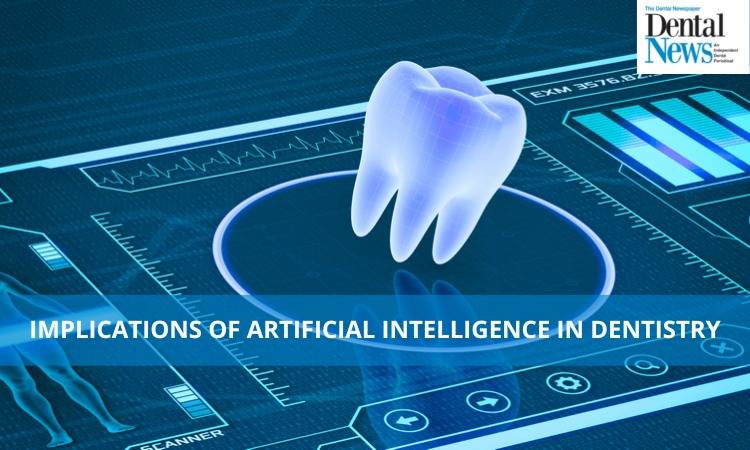
While healthcare is in the midst of a digital revolution - Artificial Intelligence has been at the forefront of it. Previously, CT scans, MRIs and many other health records were benefitting from Artificial Intelligence. However, dentistry will provide patients with a first-hand experience with AI. The ability of computers to interpret x-rays with greater diagnostic accuracy, efficient access to data and enhanced management are some of the courses AI has taken in dentistry.
Dental disease prediction is another great tool which allows the dentist to evaluate oral conditions. These predictions help dentists to come up with treatment modalities before the onset of the disease resulting in a customised treatment approach for the patients.
Machine learning algorithms also proved to outperform dentists in diagnosing tooth decay or predicting whether a tooth should be extracted, retained, or have restorative treatment.
"AI is not responsible for the dental examination and does not reach decisions on the treatment. However, dentalXrai Pro raises dentistry to a standardized, high-quality level and immensely speeds up the analysis of X-rays, so that dentists can use the time more effectively for talking to patients." Says the co-founder of dentalXrai.
Applications Of Artificial Intelligence In Dentistry
While AI is expanding its influence on patient care and dental practices. Here are three different ways dentistry is making use of AI.
1. Dental Data Analytics
The data analytics tools allow a thorough evaluation of your dental setting while providing tools to manage and monitor your services. These tools help the dentist tread the line between patient care and business setting making communication and patient dealing easier.
2. Oral Health & General Health
AI can help bridge the gap between patient oral health and systemic health while allowing thorough evaluation of oral conditions and their implications on systemic health. The data-based evaluation allows analysis and treatment planning as it alerts the patients to certain susceptibilities in their dental/overall health.
3. Communication & Treatment Modalities
The multiple layers of applications offered by AI also include integrated imaging technology to gain deeper details about the diagnostic data. These details are used for assistance and treatment planning. AI has also transformed surgeries via robotic capabilities which can be applied under the guidance of an expert surgeon.
Overjet CEO, Wardah Inam, articulated some of the advantages of using AI in dentistry. According to her, the applications can be divided into three broad categories.
Practice, Diagnostic and a Managerial level.
"How do you communicate with the patient better in terms of their diseases and such that they’re more informed about their diseases as well.” - Practice
"Being able to provide a more comprehensive diagnosis where things that might have been missed previously or might not be on their radar, those aspects can be brought to them at the right time, while the patient is in the chair and their data is analyzed.” - Diagnostic.
"Right now for the first time ever, you can actually monitor and track your clinical performance. So you’re looking at how your practices are doing clinically rather than just financially. That helps to determine how you can improve that performance and where the risks and opportunities are.” With “what is possible” in mind, let’s explore some leading applications of AI in dentistry that you can use now." - Managerial

Dr Rida Qamar
The author is contributing writer at Dental News Pakistan and can be reached at Ridaqamar100@gmail.com

